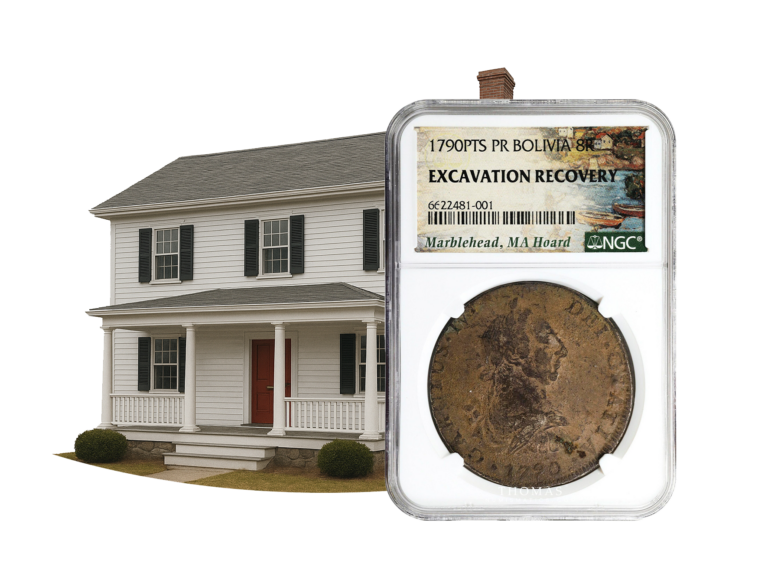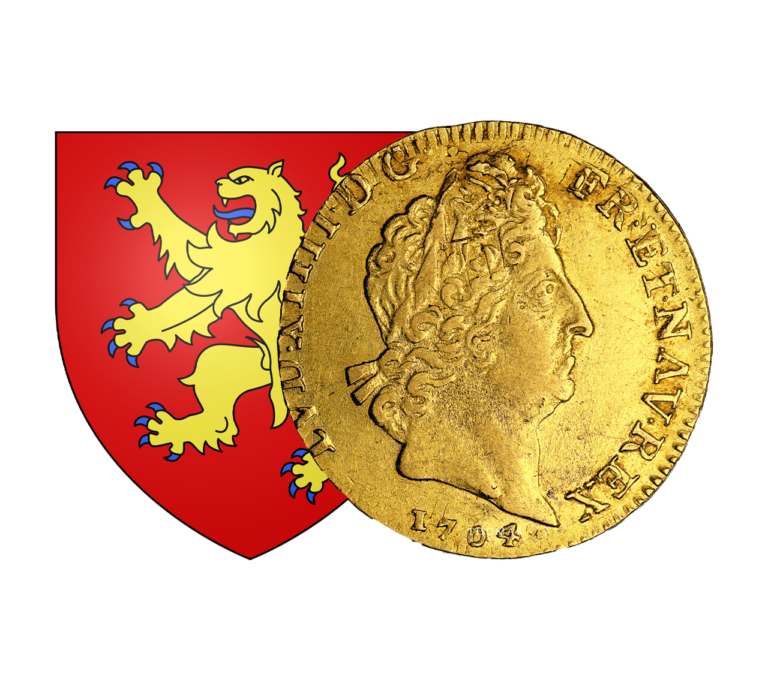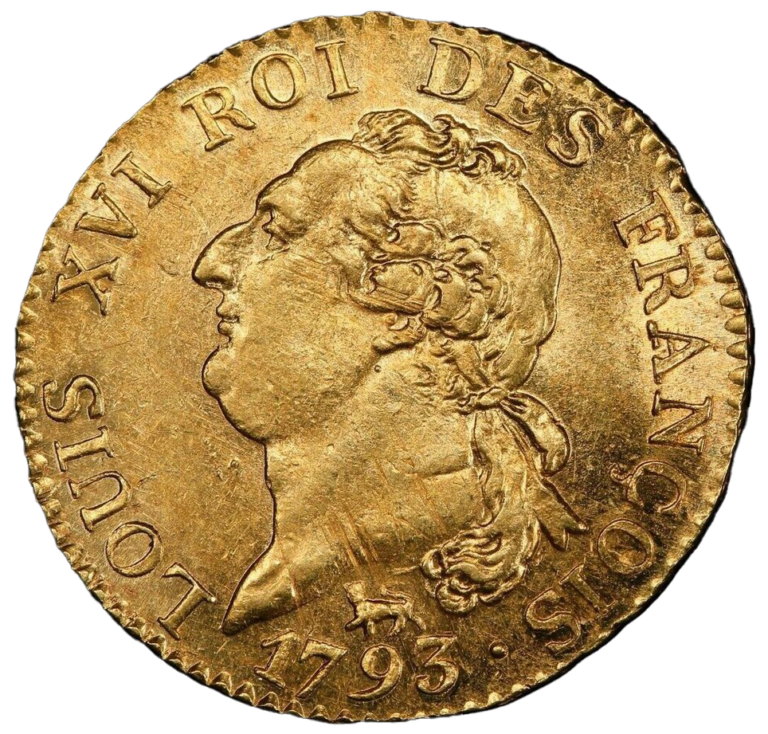
Discover all the news and articles from TNUMIS Magazine exclusively
Louis XIII coins: a treasure trove numismatics to discover
The era of Louis XIII was marked by important historical, political and cultural events. The coins minted under his reign bear witness to this rich period in French history. In this article, we explore the different coins issued under Louis XIII, highlighting their diversity, value and importance in the field of numismatics.
The reign of Louis XIII
Louis XIII inherited the throne of France in 1610, following the assassination of his father, King Henri IV. He was only eight years old, and only really came to power in 1617, when he exiled his regent mother, Marie de Médicis. His reign, which lasted until 1643, was marked by religious, political and military conflicts, as well as significant changes in the administration and centralization of power in France. He pursued a strong policy of re-establishing power and asserting the country’s strength.
In numismatic terms, Louis XIII truly changed the course of history. In 1940, he decided to introduce a new monetary system with the creation of the Louis d’or. The aim? Stabilize the currency, become more competitive with the Spanish and English kingdoms, and restore public confidence. On March 31, 1940, the Edict of Nantes was signed, ratifying the birth of the Louis d’Or.
The Louis d’or
A remarkable novelty
The louis d’or was designed by French sculptor and engraver Jean Varin. On the obverse, the right profile of Louis XIII with laurel head is framed by the Latin inscriptions LVD XIII (or XIIII) DG – FR ET NAV REX, meaning “Louis, King of France and Navarre by the grace of God”. On the reverse, the inscription CHRS REGN VINC IMP translates as “Christ reigns, conquers and rules”. The inscription surrounds a cross with royal crowns and fleurs-de-lys.
Unlike coins that had previously been struck by hand with a hammer, the creation of the louis d’or provided the opportunity to validate a new technique: pendulum striking. This method enabled the quality of the details to be improved.
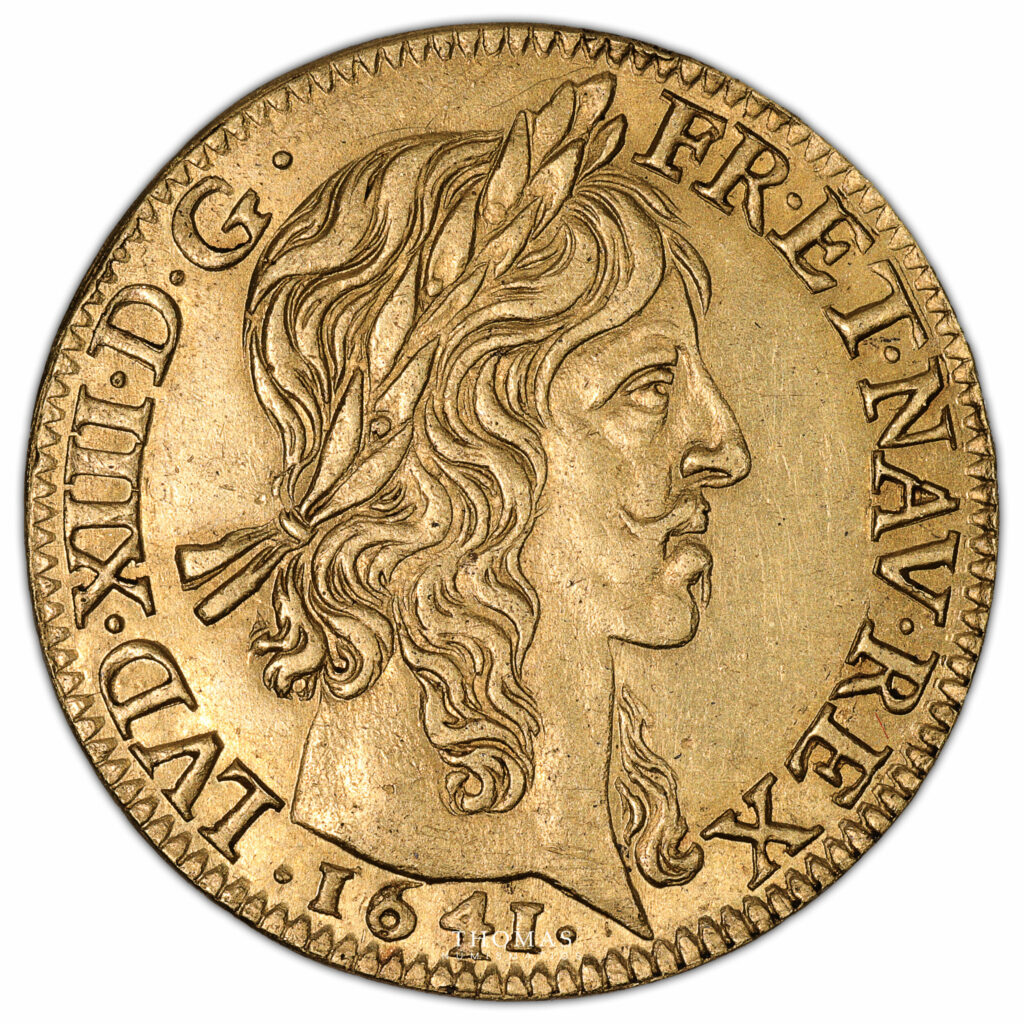
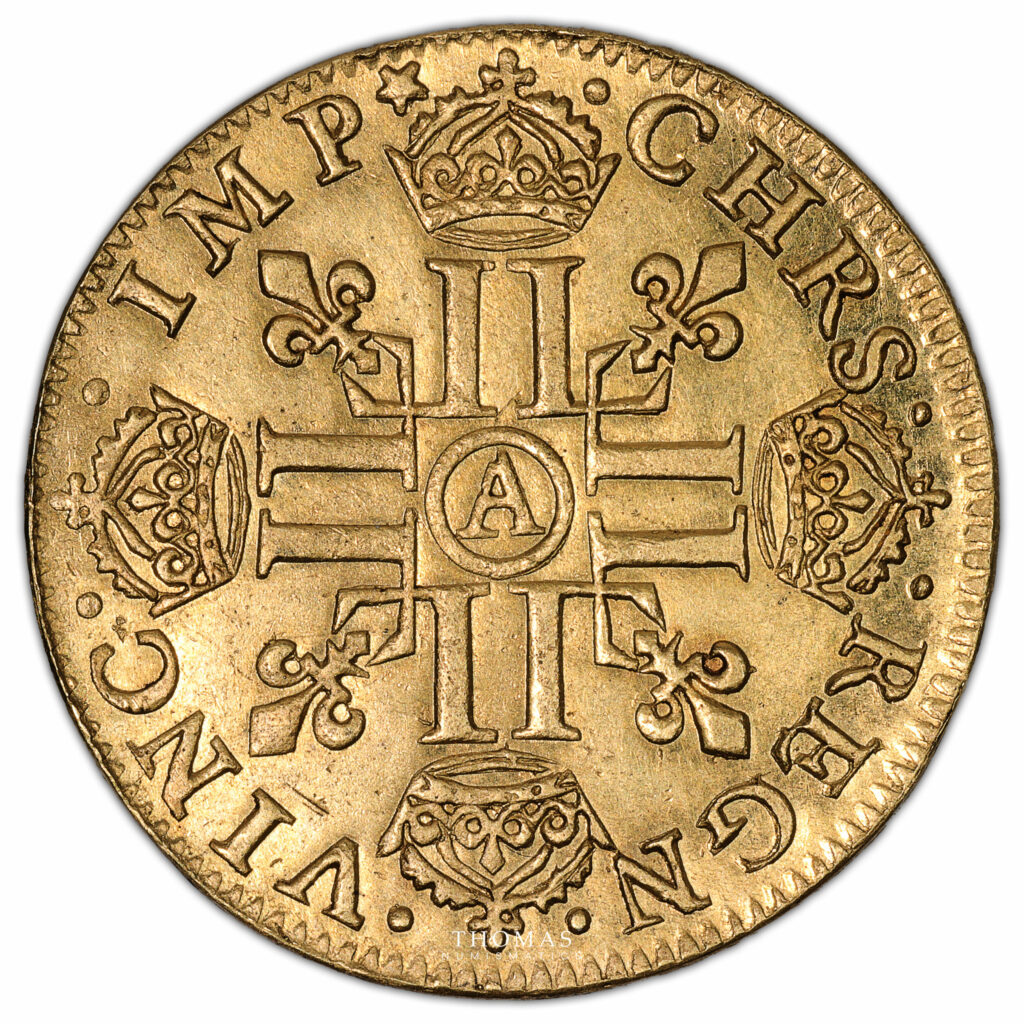
The 10 Louis d’or
While demi Louis d’or, louis d’or and double Louis d’or were the three most common types, the 10 Louis d’or was one of France’s most exceptional royal coins. Never put into circulation, this remarkably high quality pleasure coin was made for court games. It is not known exactly how many exist, but very few are known today.
There are two variations: one shows the king with an antique-style draped collar known as “au buste habillé”, while the other depicts Louis XIII with a nude bust.
Its dimensions and weight are atypical: 4.5 cm in diameter and over 67 grams.
Other Louis XIII coins
However, the Louis d’or did not replace the old coins, which continued to be minted concomitantly. Here are some of the main Louis XIII coins in circulation at the time.
The golden shield in the sun
This is the last gold ecu in French monetary history. This gold coin was still hammered, before being replaced by its successor, the Louis d’or.
On the obverse of the shield of France, the three fleurs-de-lis symbolize monarchy. Above, the royal crown is surmounted by a sun and surrounded by the following inscription: “Louis XIII, par la grâce de Dieu, roi de France et de Navarre” (Louis XIII, by the grace of God, King of France and Navarre). On the reverse, a cross with twisted arms and fleur-de-lys is surrounded by the title “Christ reigns, conquers and commands”.
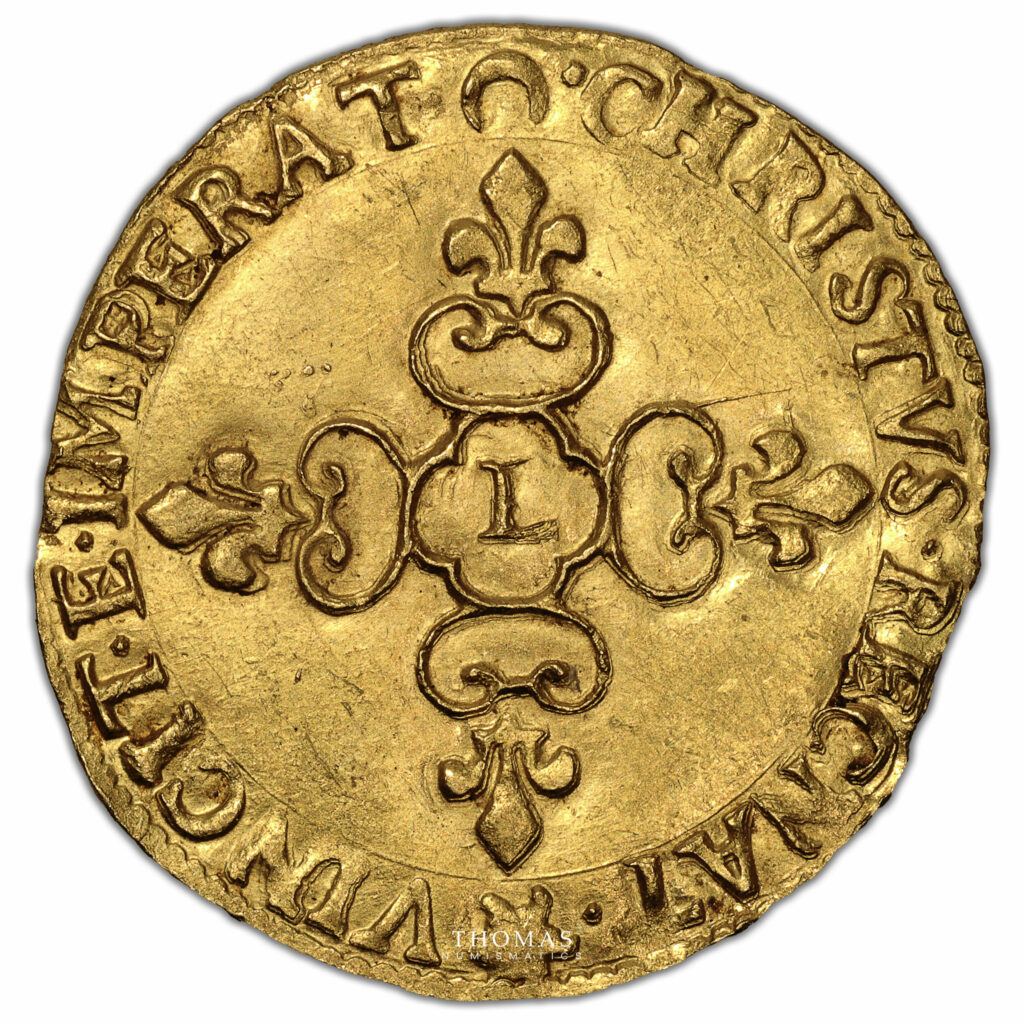
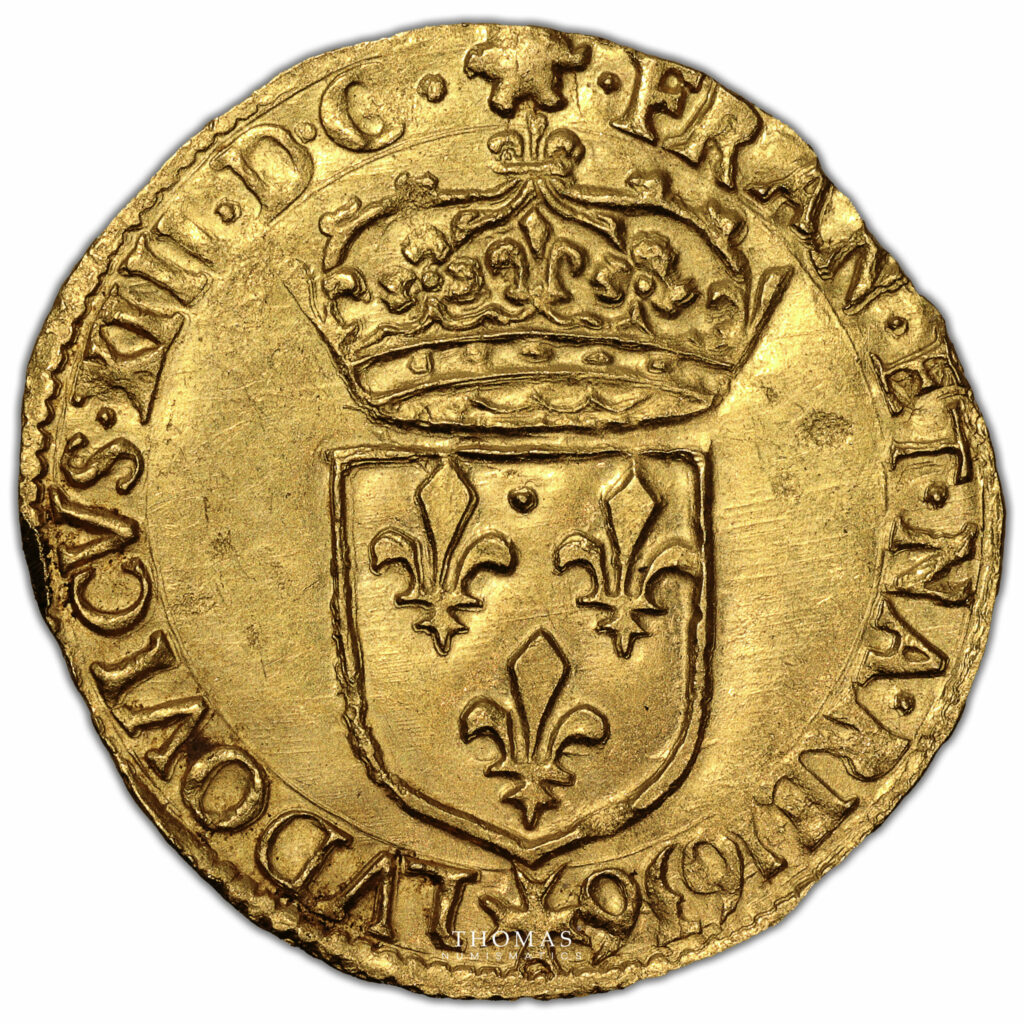
The double tournament
The double tournois is a small copper coin, worth two tournois, which circulated widely in 17th-century France. The reverse features three lilies surrounded by the coin’s denomination and the workshop mark indicating its origin.
Despite its small size, the double tournois was an important currency for everyday transactions, particularly in low-value exchanges.
Engravings on this coin are generally less detailed than those on ecus, but nevertheless reflect a certain level of artistic precision. Among the most emblematic examples of this Louis XIII coinage are the double tournois with the childlike bust or the old Varin head.
The quarter ecu
The quart d’écu is an intermediate-sized silver coin measuring around 30 mm. Originally used to refer to gold coins in the Middle Ages, the term was applied to silver coins under the Ancien Régime.
This coin was prized for its quality and regularity of minting, making it a reliable and widely accepted means of payment.
Engravings on the quart d’écu are generally executed with great attention to detail, highlighting the king’s portrait or decorative elements such as fleurs-de-lys and armoiries.
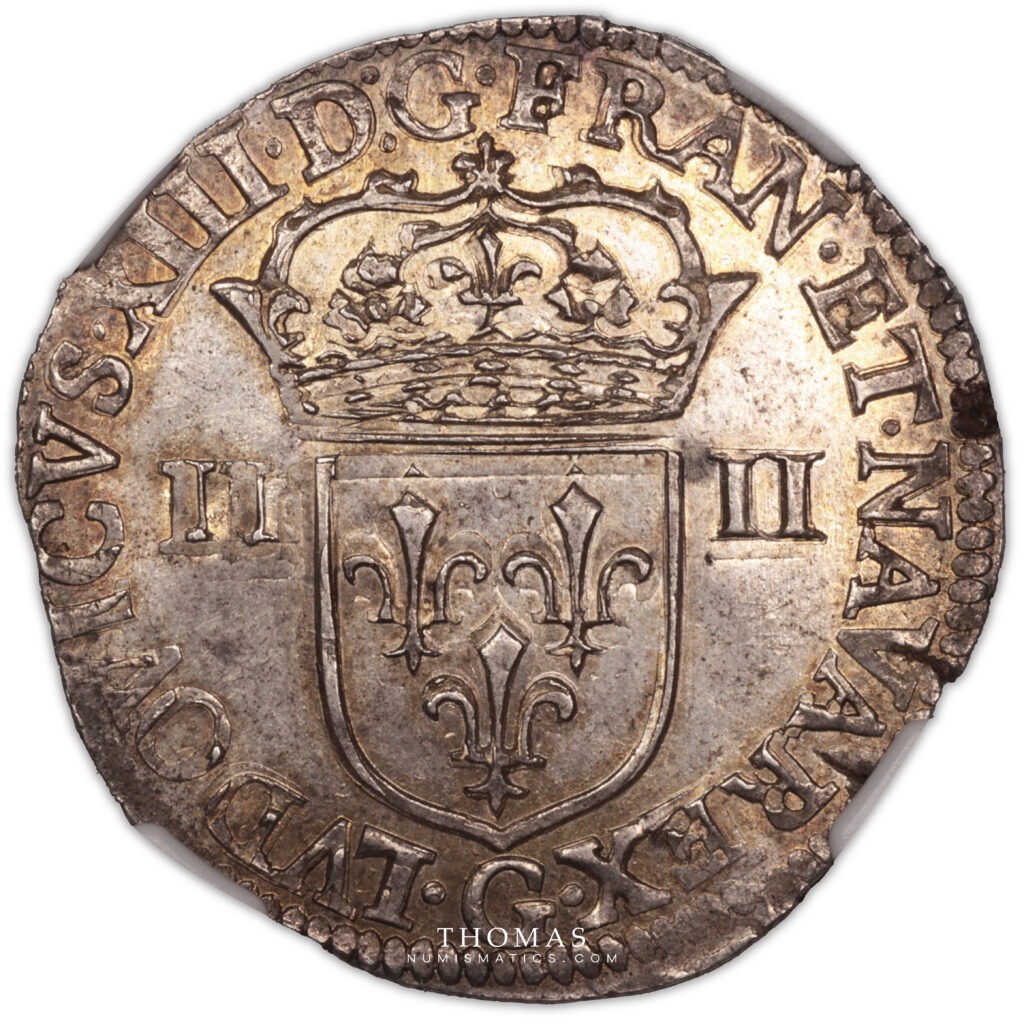
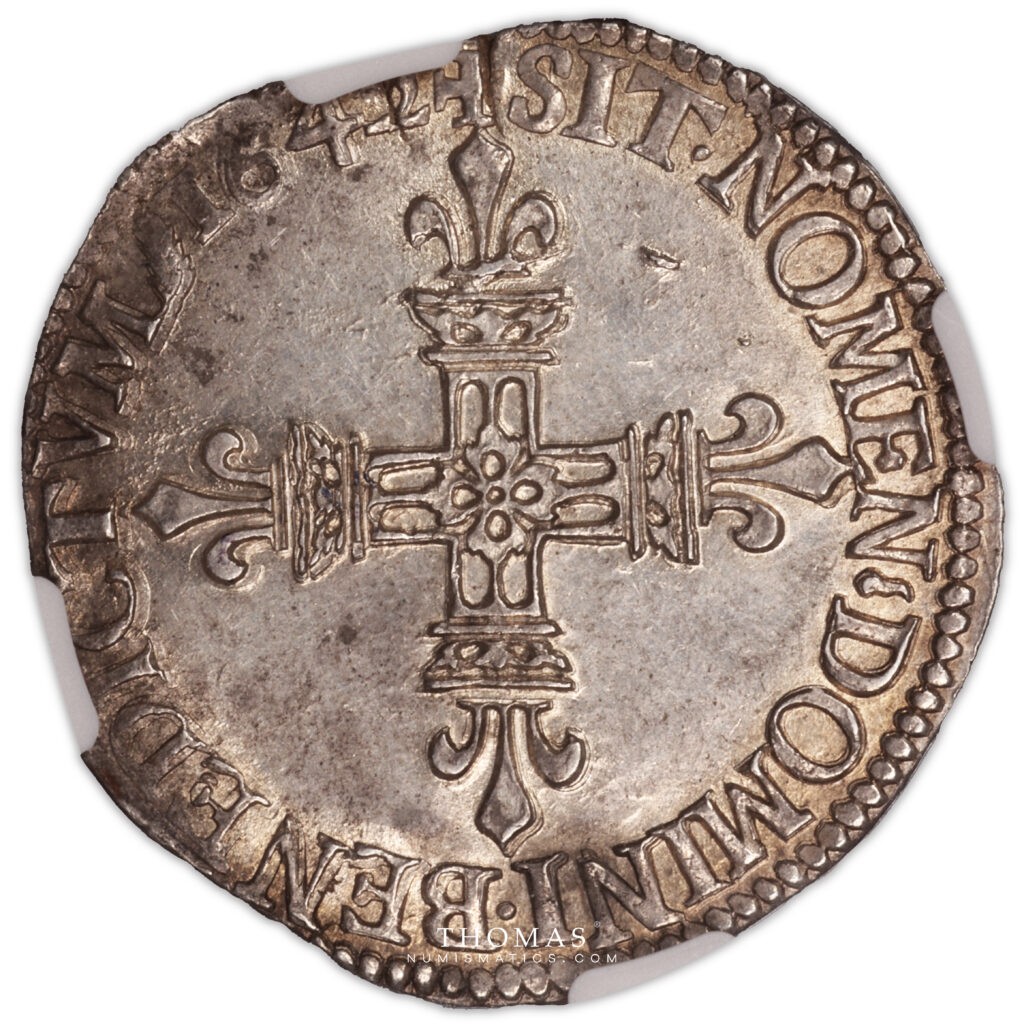
The half-finish
The demi-franc is a medium-sized silver coin, worth half a franc. It features a portrait of the king on the obverse, accompanied by his titles and name. The reverse features inscriptions indicating the value of the coin and heraldic symbols such as crowns and crosses.
The demi-franc was widely used in domestic and foreign trade, due to its stable value.
French coins from the time of King Louis XIII are a veritable numismatic treasure trove, illustrating the diversity and richness of the French monetary system at the time. Their study provides a better understanding of this tumultuous period, while offering numismatists the world over the chance to own an authentic piece of French history.
Our Thomas Numismatics shop regularly offers exceptional Louis XIII coins for sale.
